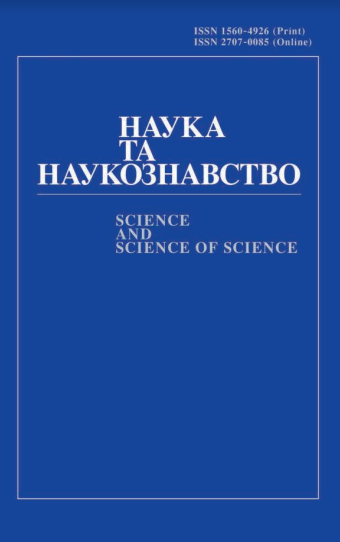The The Urgency of Cardinal Measures on Rehabilitation of Research Staff in the Ukrainian R&D
DOI:
https://doi.org/10.15407/sofs2019.01.037Keywords:
method of endogenous forecasting, innovation-driven development, researchers, research potential, age profile of researchersAbstract
The article aims to find out possible outcomes if effective measures to support the national R&D and create the environment enhancing the merit of researcher’s profession for the youth are not taken immediately.
The method of endogenous forecasting is used to estimate the change in the number of researchers in the Ukrainian R&D, when the created working conditions in R&D will be good enough to ensure the 15 percent annual increase in the inflow of youth, with not higher than 5 percent transfer of researchers aged 30 to 59 to other sectors. The computation is based on the assumption that each five years 40 % of researchers reaching the pension age (³60 years) leave research institutions, which was the case of the latest years. The forecasting of the total number of researchers in Ukraine is made for four cases: (i) the domestic R&D policy is unchanged; (ii) good working conditions in R&D were created in 2015; (iii) radical measures to rehabilitate the research staff in Ukraine will be launched in 2020; and (iv) the measures are postponed for 2025.
The following results are given: the estimated number of researchers in Ukraine depending on the year when active rehabilitation measures are launched; age profile of the number of researchers in Ukraine, estimated for 2025, if the annual inflow of youth in R&D will increase by 15 % after 2020; age profile of the number of researchers in Ukraine, estimated for 2030, if the annual inflow of youth in R&D will increase by 15 % after 2020 or 2025; the estimated change in the average age of Ukrainian researchers for various policy options; the impact of pensioners dismissals from research institutions on the probable evolution of the number of researchers in Ukraine.
The forecasting confirms that the abovementioned measures are really urgent: they need to be launched not later than after 2020. The estimated consequences for the case when the measures are postponed for 2025 show that Ukraine will not be capable to reach the average EU number of researchers per 1 million population until 2050, especially when it is born in mind that the research staff of EU will be increasing all this time.
References
Попович О.С., Костриця О.П. Відновлення наукового потенціалу української науки: необхідність і реальні перспективи. Наука та інновації. 2017. № 13(4). С. 5—17. https://doi.org/10.15407/scine13.04.005
Попович О.С., Костриця О.П. Прогнозні оцінки еволюції вікової структури і чисельності дослідників в Україні на найближче десятиріччя. Наука та наукознавство. 2017. № 1. C. 49—60.
Попович А.С., Кострица Е.П. Эволюция кадрового потенциала науки: прогноз и регулирование. Рига: LAP LAMBERT Academic Publishing RU, 2018. 81 с.
ФлоридаР. Креативныйкласс. Люди, которые меняют будущее. М.: Изд. дом «Классика ХХІ», 2007. 421 с.
Вашуленко О.С. Вікова структура кадрового потенціалу наукової системи України. Наука та наукознавство. 2009. № 3. С. 31—45.
Грига В.Ю., Вашуленко О.С. Оцінка стану наукових кадрів України: віковий аспект. Наука та наукознавство. 2013. № 1. С. 38—46.
Булкин И.А. Эволюция возрастной структуры исследователей в организациях НАН Украины. Наука та наукознавство. 2016. № 4. С. 38—39.
Downloads
Published
How to Cite
Issue
Section
License
Copyright (c) 2024 Science and Science of Science

This work is licensed under a Creative Commons Attribution-NonCommercial 4.0 International License.

